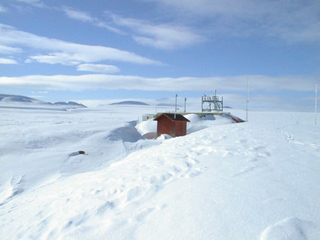Here are the (slightly modified) Wikipedia entries for Alert. I will write more about my research objectives and why we have chosen this place in the forthcoming description of my work there.

“Alert is the northernmost permanently inhabited place in the world. It is located at N 82°28′ W 62°30′ on the northeastern tip of Ellesmere Island. Alert lies just 817 km (507 mi) from the north pole and is closer to major European cities like Stockholm or Moscow than it is to Ottawa.
Alert also has only temporary inhabitants as it hosts a military signals intelligence radio receiving facility at Canadian Forces Station Alert (CFS Alert), as well as a co-located Environment Canada weather station, a GAW atmosphere monitoring laboratory, and the Alert Airport. The rugged terrain of the settlement is surrounded by hills and valleys. The shore is composed primarily of slate and shale, and the sea is covered with pack ice year-round. The local climate is semi-arid. However, evaporation rates are also very low, as average monthly temperatures are above freezing only in July and August.
There is 24-hour daylight from the last week of March until the middle of September and the sun is above the horizon from mid-April through August. From mid-October through the end of February the sun does not rise above the horizon and there is 24-hour darkness from the end of October until mid-February.
Sir George Nares was the first to reach the northern end of Ellesmere Island; he arrived on HMS Alert in 1875/1876. The weather station was established in 1950, and the military station in 1958.”
Sources for this entry:
Wikipedia on Alert, Nunavut
Wikipedia on CFB Alert
NOAA for the photo